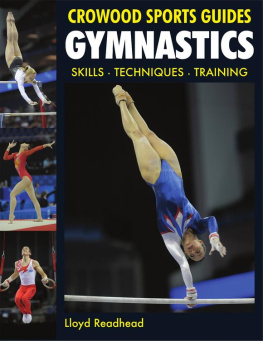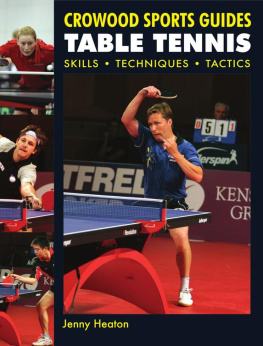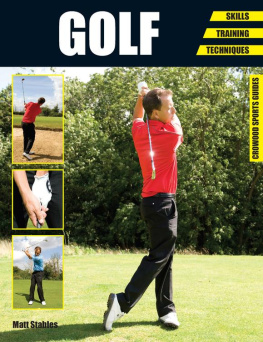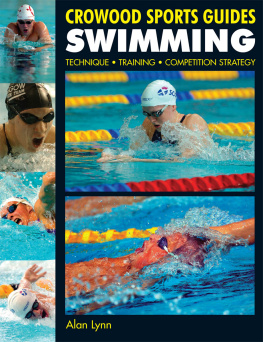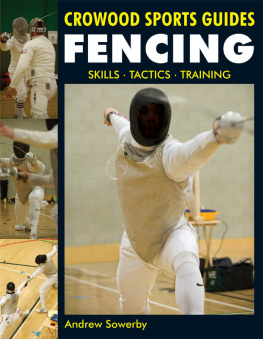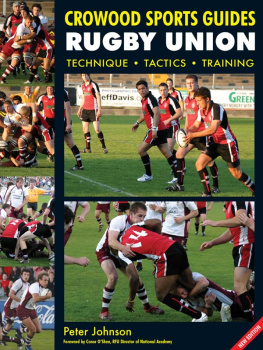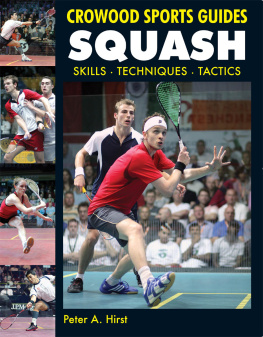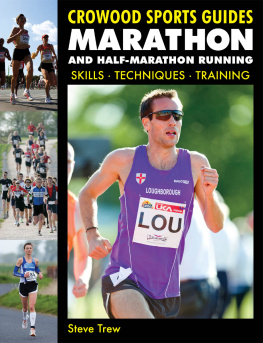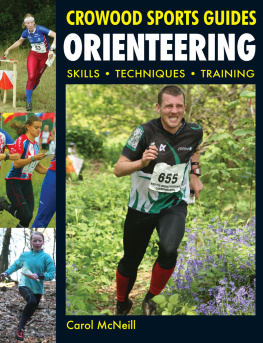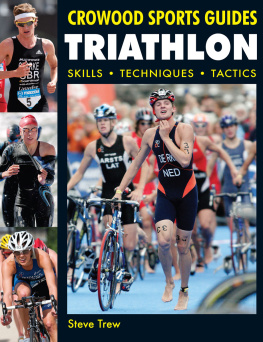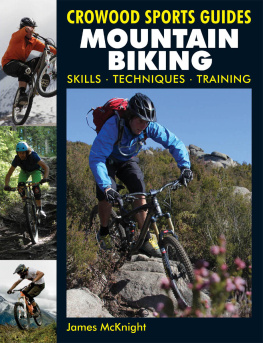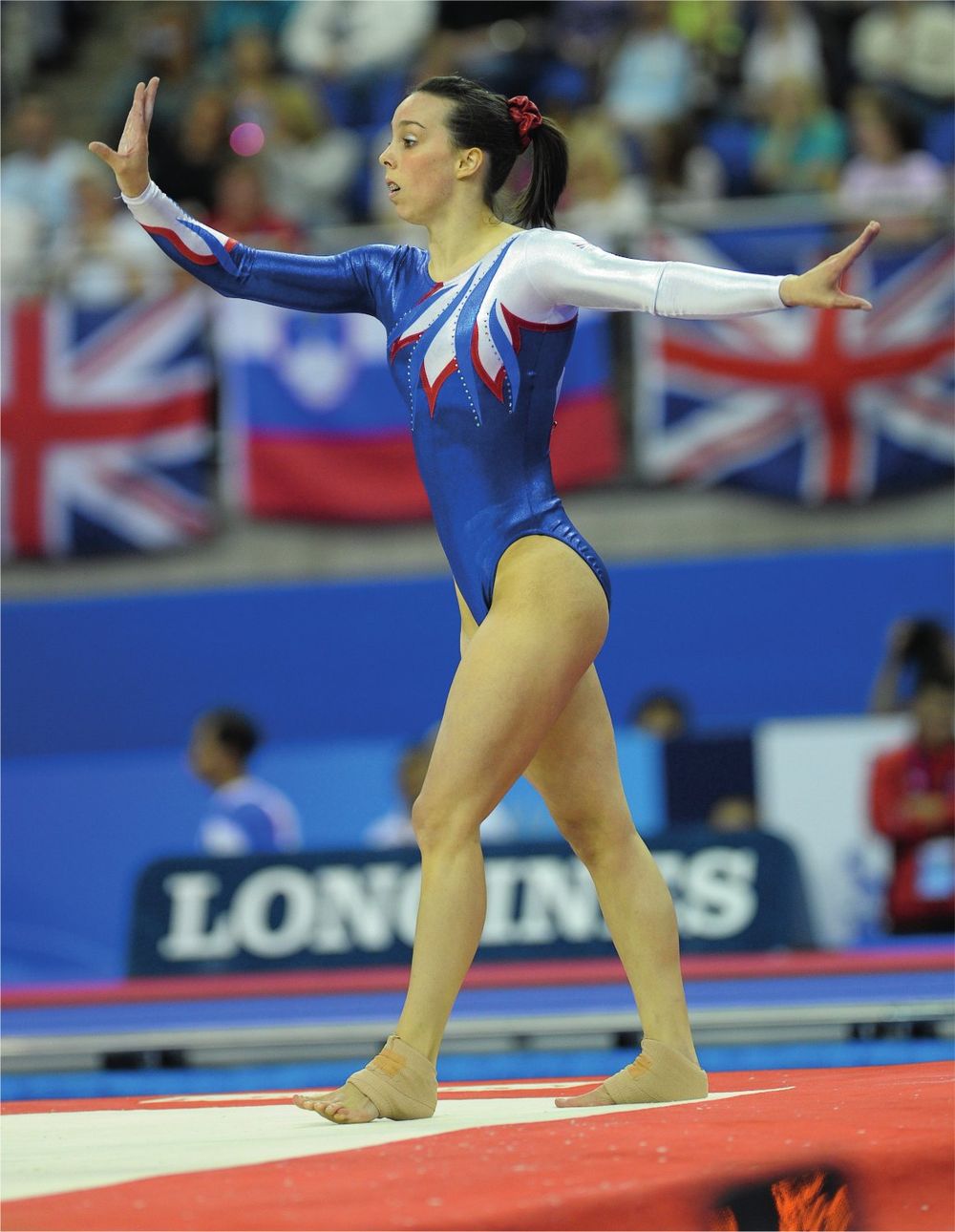First published in 2011 by
The Crowood Press Ltd,
Ramsbury, Marlborough,
Wiltshire, SN8 2HR
www.crowood.com
This e-book edition first published in 2013
The Crowood Press Ltd 2011
All rights reserved. This e-book is copyright material and must not be copied, reproduced, transferred, distributed, leased, licensed or publicly performed or used in any way except as specifically permitted in writing by the publishers, as allowed under the terms and conditions under which it was purchased or as strictly permitted by applicable copyright law. Any unauthorised distribution or use of this text may be a direct infringement of the authors and publishers rights, and those responsible may be liable in law accordingly.
ISBN 978 1 84797 537 9
Disclaimer
Please note that the author and the publisher of this e-book do not accept any responsibility in any manner whatsoever for any damage or injury of any kind that may result from the practising, or applying, the principles, ideas, techniques and/or following the instructions/information described in this publication. Since the physical activities in this e-book may be too strenuous in nature for some readers to engage in safely, it is essential that a doctor be consulted before undertaking training. It is also essential that all training is supervised at all times by a qualified gymnastic instructor.
Acknowledgements
The author and publisher would like to thank the following for their help in the production of this e-book.
Alan Edwards, for the supply of photographs.
Mark Young, for his assistance in collating the photographic images.
British Gymnastics for the use of their gymnastics library and archives.
The many gymnastic colleagues and friends who have helped the author to acquire the knowledge and experience to enable this e-book to be written.
Photographs Alan Edwards Photography
Gymnastics continues to grow in popularity , and there are many opportunities to participate as a gymnast, coach, judge or official. Clubs, schools and sports centres provide for all ages and abilities ranging from pre-school classes through to world and Olympic performance levels.
There are a number of gymnastic disciplines , including mens and womens artistic gymnastics, rhythmic gymnastics, acrobatics , tumbling, trampoline, double mini trampoline, aerobics, team gymnastics, freestyle and general gymnastics; more recently cheerleading has also joined the gymnastics family.
This book will concentrate on mens and womens artistic gymnastics and will aim to provide a broad understanding of these two disciplines. It will also explain how young male and female gymnasts can develop through a safe and progressive training regime.
Gymnasts are regarded as being among the fittest of all sports participants and are respected by other sportsmen and women for this, as well as their commitment and dedication. Gymnastics requires many of the qualities that athletes strive for a gymnast must be immensely strong, superbly flexible, artistic, graceful, skilful and courageous.
The allure of gymnastics comes from the amazing number of skills and complex combination of skills that can be learnt and performed in competition routines. These offer a continuing challenge and provide the ongoing excitement for the gymnast and coach. Unlike most other sports, in gymnastics new skills continue to be invented and the rules and apparatus evolve to stimulate new ideas and ensure that the sport does not stagnate.
The book will also describe and illustrate some of the core skills that are the foundation upon which the more advanced skills are built. Examples of current high performance skills will also be illustrated and the methods used to teach the skills described. The book should therefore be interesting for young male and female gymnasts, coaches, judges, pupils, students and parents of gymnasts.
Gymnastics must be taught in a safe and progressive manner in suitable facilities in order to facilitate learning and reduce the risk of injury. Gymnastics should only be performed in the presence of a suitably trained and qualified coach or coaches. This book is a broad guide to artistic gymnastics and is not intended to be a comprehensive training manual.
If you wish to be involved in gymnastics you should join a formally approved club or centre that uses fully qualified coaches. Details can be obtained from the national governing body for gymnastics for the particular country.
The Origins of the Sport
Historians have claimed that the origins of gymnastics can be traced right back to the ancient Greek and Roman civilizations, where physical exercises on various forms of apparatus were used to train the military personnel. The exercises were called gymnastics and were practised in an open-air facility called a gymnasium.
Some time later the Greek gymnastic exercises were modified by Guts Muths to form the basis of the German physical education curriculum. This work was further developed by Ludwig Jahn (17781839), who designed basic apparatus such as pommel horse, rings, parallel bars and horizontal bar, on which the exercises were practised. This lead to the formation of gymnastics clubs (Turnvereine) in Germany and the term German gymnastics was used to refer to this form of activity. A form of mens gymnastics was included in the first modern Olympic Games in 1896 and from its origins in Europe the sport began to develop all around the world.
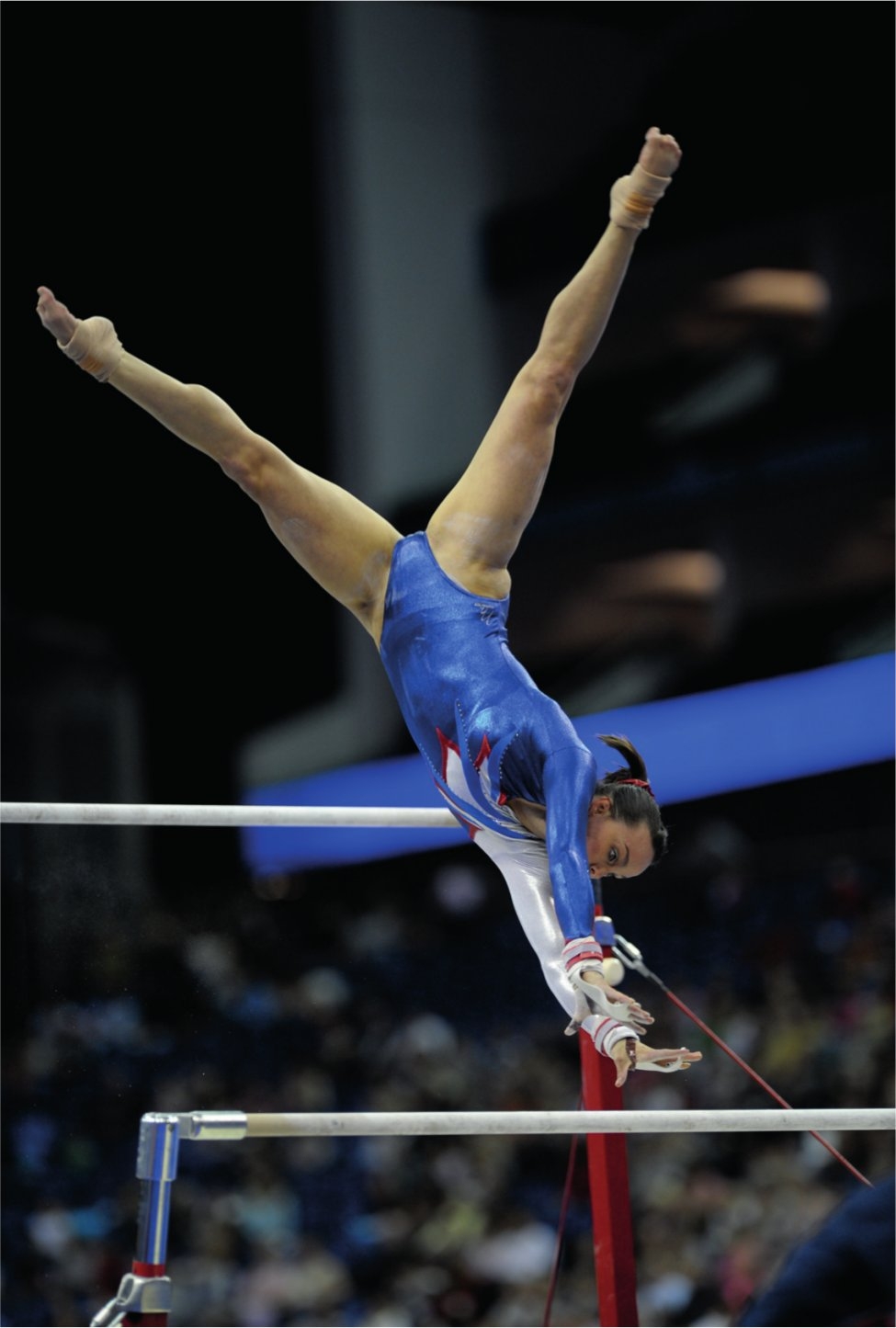
Skill and precision demonstrated by Beth Tweddle (GB) on asymmetric bars.
The first gymnastic clubs in the UK and USA were established in the 1850s. At this time the apparatus would include a pommel horse, which had a drooping end rather like a grazing horse; swinging rings; club swinging; a horizontal bar, which comprised a metal bar covered with a wooden veneer held in place by solid metal rods; and very basic floor matting, usually made from canvas covers filled with some form of coarse hair.
As more countries became involved in the sport in the early 1900s, the design of the apparatus improved and a new style of mens gymnastics evolved to form the foundation of modern gymnastics. The term Olympic gymnastics was extensively used to describe the competitive form of the sport.
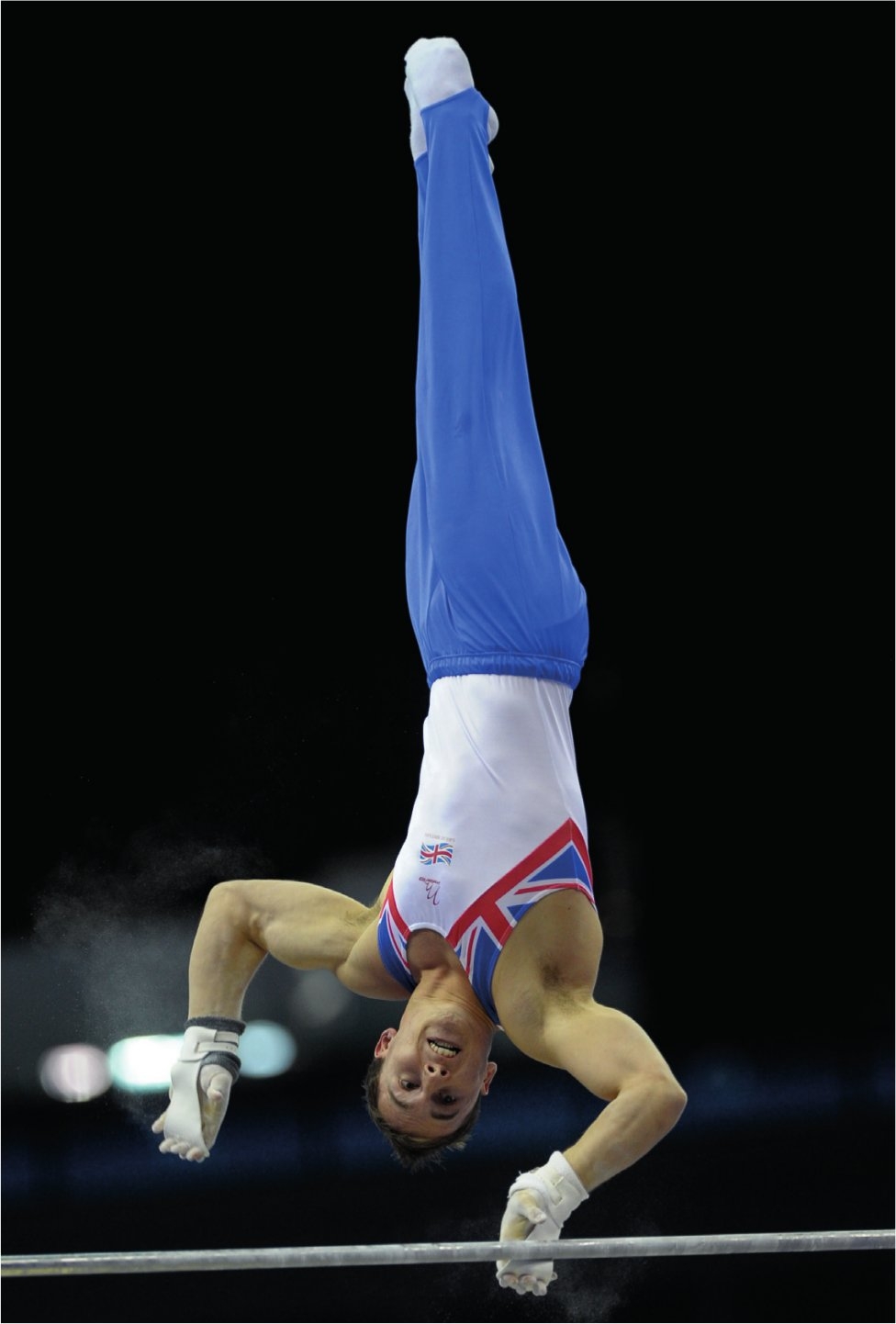
A spectacular performance by Daniel Keatings (GB) on horizontal bar.
Womens gymnastics gained its formal international recognition at the 1952 Olympic Games and gymnasts from the Soviet Union (USSR) dominated the sport for over a decade. The Japanese came to the forefront of mens Olympic gymnastics in the 1960s, but the Soviet gymnasts gradually eroded the dominance of the Japanese.
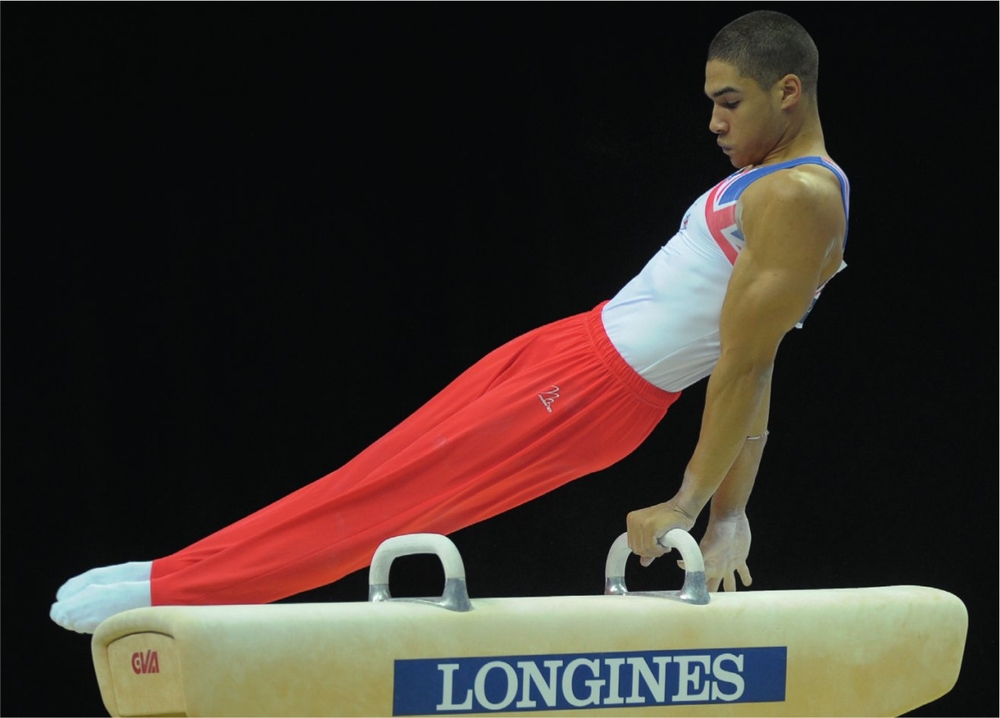
A stylish Louis Smith (GB) on pommel horse.
In 1972 the gymnastic events at the Munich Olympics were extensively televised and the viewing audience for these events exceeded those of all the other sports. The emergence of Olga Korbut onto the world scene and the amazing performances of the other male and female gymnasts were watched by millions. The resultant boom in interest coincided with a period of growth in the building of sports centres and gymnastics facilities and together they provided the stimulus for massive growth in the sport.

